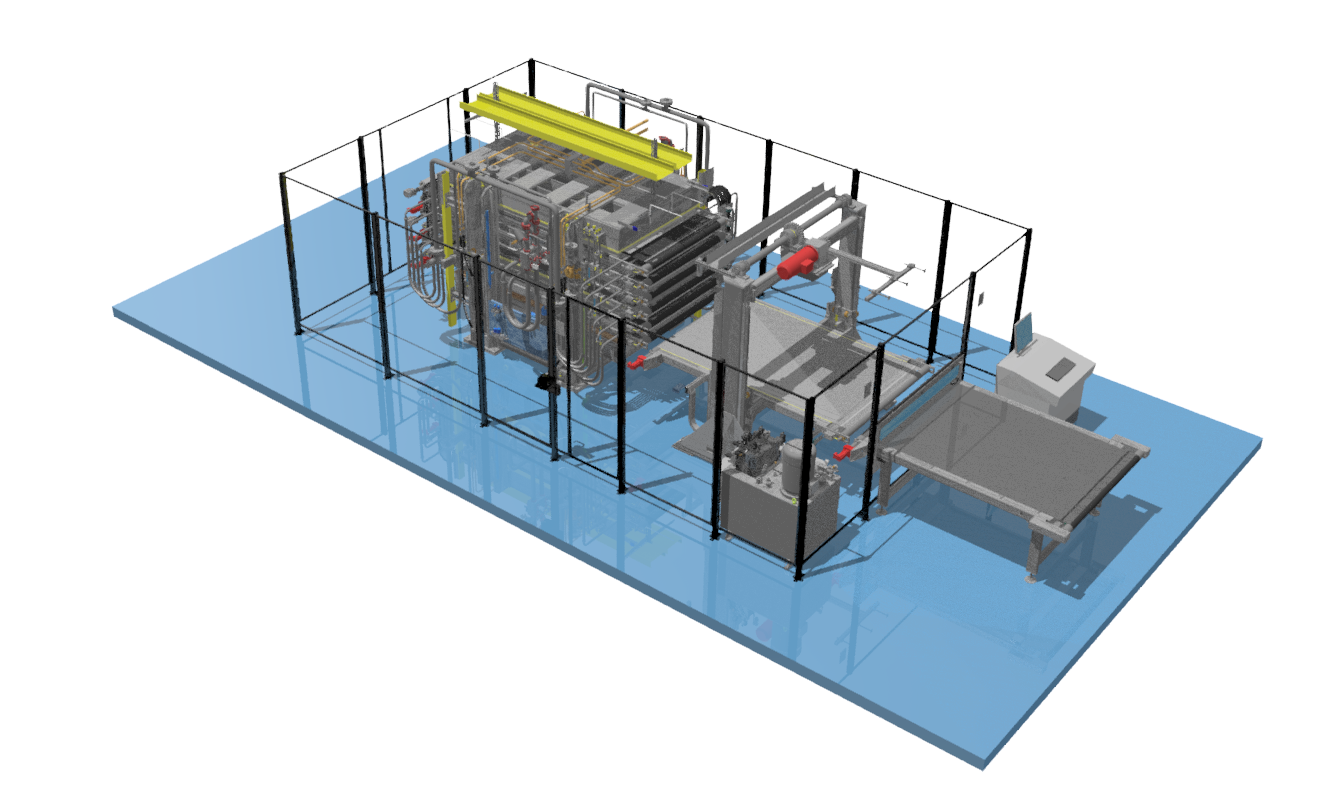| Duration: | 1/2019 - 12/2022 |
| Contracting Authority/ Sponsors: |
Bundesministerium für Wirtschaft und Energie (BMWi) |
| Project Partners: | M10 Industries AG; Robert Bürkle GmbH |
| Project Focus: |
GEPARD – High-Throughput Production System and Process Technology for Crystalline Silicon Solar Modules

Germany was the world's leading production location for PV cells and modules until 2007. Thereafter, cost pressure has largely shifted production abroad. Equipment manufacturers who build turnkey production lines and export them worldwide are also under pressure. With innovative PV production technologies, we are strengthening mechanical engineering, enabling them to produce faster and cheaper. If the degree of automation continues to increase, production capacities could also be built up again in Germany.
The aim of the project “Gepard” is to increase productivity in solar module production and thus reduce specific module costs while ensuring maximum module reliability. Stringer and lamination technology plays a key role in this process. These technologies will be further developed together with the project partners Bürkle and M10. The aim is to design a production concept with a 200 MW production facility with one stringer and one laminator each.
Improve concept of interconnection
The interconnection concept of the KUBUS stringer of the company M10 is based on a high level of parallelization of the solar cell string production. All cell strings of a full format module with 60 cells are produced here in parallel within one process run. As part of the project, suitable soldering methods are being developed and characterized to process more than 6 busbars and to interconnect the cells with round wires. The analysis of the soldering process with regard to temperature profile, homogeneous heat transfer, cell-holding concept and cycle time is also part of the project. Further research into solder bond formation, microstructure and thermomechanics is essential for throughput optimization. The annual capacity of a KUBUS stringer is to be increased to at least 200 MW annually. The aim is to connect more than 4000 cells per hour through the 6 parallel tracks with round wires.
Examine and optimize lamination processes
The laminator Ypsator from Bürkle already copes with a very high throughput in a two-stage laminating process over several floors. A deep understanding of lamination is necessary in order to identify optimization potentials. With the help of in-situ analysis of the lamination and accelerated aging testing of the EVA cross-linking of the laminate, we will expand the basic knowledge. By modifying the system technology, in particular the homogeneity and flexibility of the heating and cooling ramps and adjusting the membrane pressure, the processes are to be shortened to less than 5 minutes for glass-foil modules and less than 10 minutes for glass-glass modules. In order to increase the module reliability, the individual lamination results such as gel content and laminate adhesion are closely examined. We test the reliability of the produced modules according to the relevant certification tests of IEC 61215 (TC, DH, HF).Virtual prototyping can reduce the development costs of new module concepts. We transfer the experimental results of different materials for heat transfer in the laminate, the resulting degree of cross-linking and, if necessary, in combination with thermomechanical properties into suitable models and software.
Develop sustainable module technologies
Especially building-integrated PV or the automotive sector require lamination on curved substrates. For these applications the laminator and the process must be significantly modified and re-evaluated.